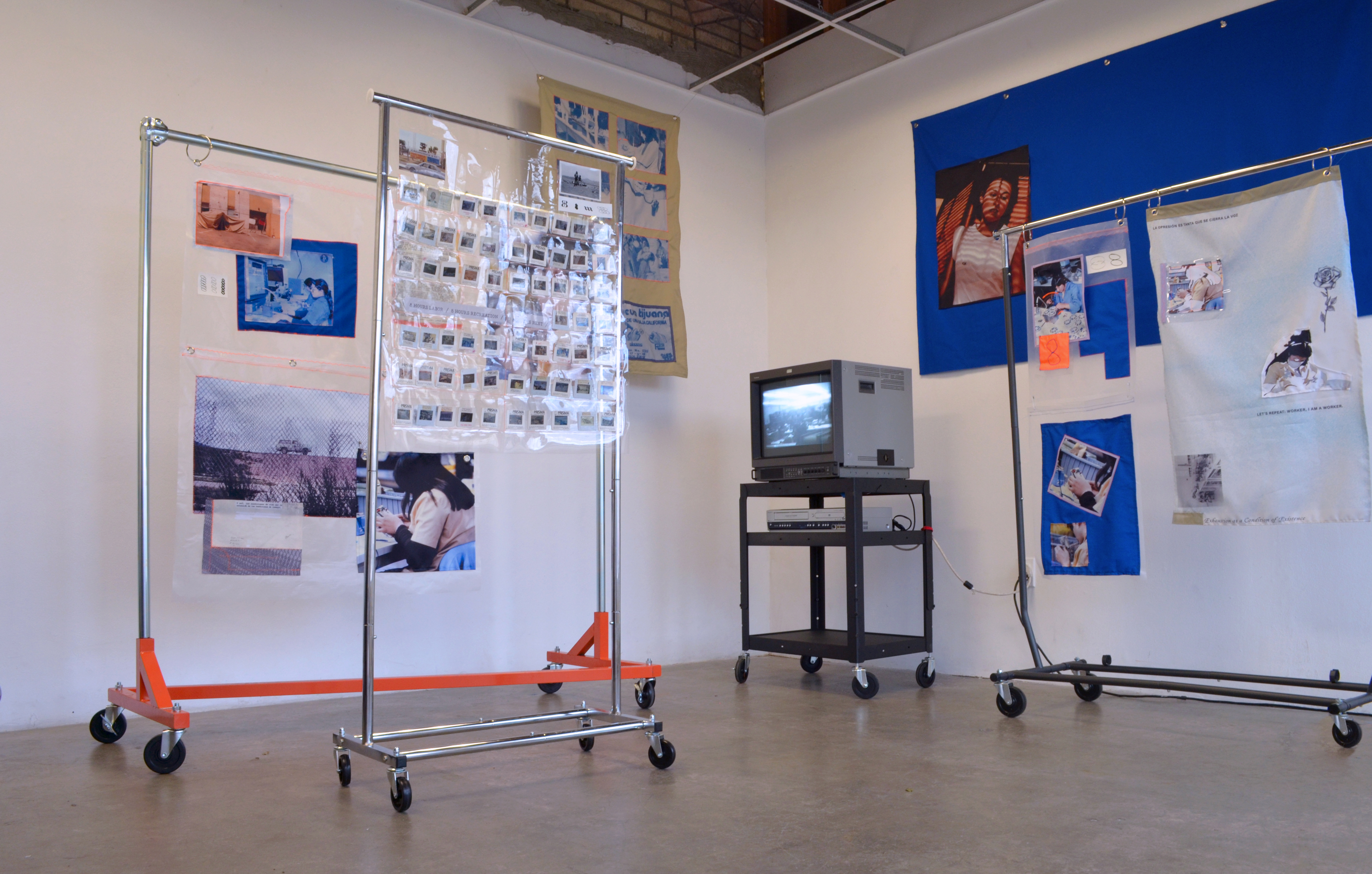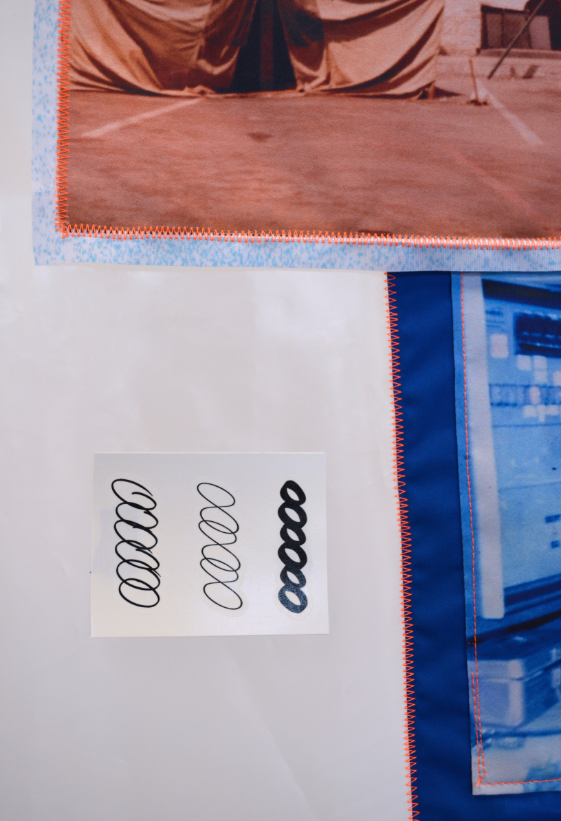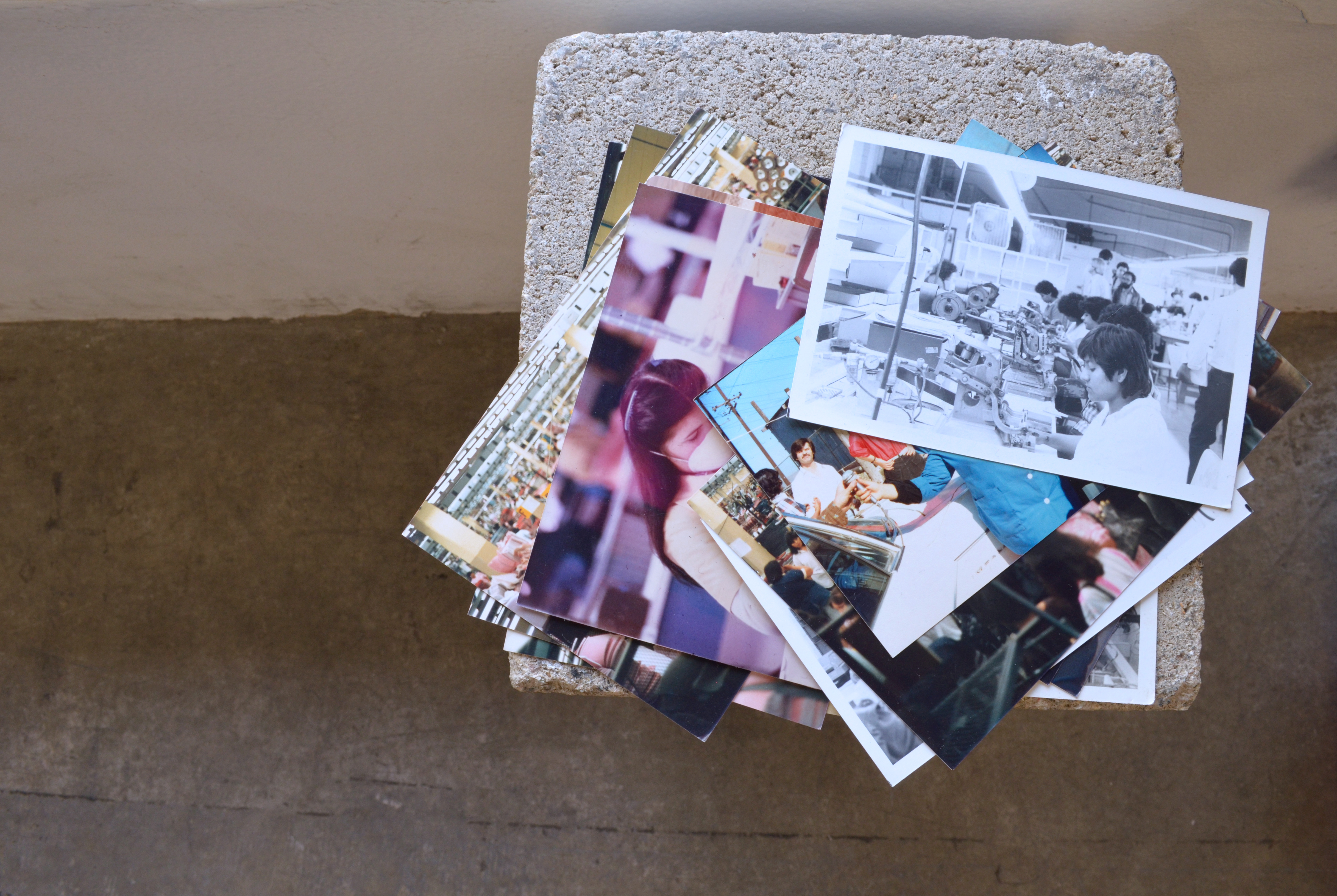01_SafetyBlue / Exhibition
Human Resources / Los Angeles/ 2021

Safety Blue is a series of encounters, an exercise in enunciation, and an access point to thread connections between past and present histories regarding women, labor, and oppression. The heart of the project is a historical archive on the working conditions of women workers in the maquiladoras of northern Mexico, particularly in Tijuana and Ciudad Juarez. The archive is an index of work documents from the artist’s parents (Norma Iglesias and Jorge Carrillo) based on research that was conducted in the early 1980s from an anthropological and sociological perspective and constitutes pioneer work in its field.
Through different mediums and readings, Safety Blue links and reinterprets the voices and histories of women maquiladora workers as well as the experiences of the artist’s mother. From this range of subjectivities, Carrillo urges us to rethink and contest how the bodies of Latin-American women workers continue to be shaped by labor, productivity, and capital; how these bodies have become political territories in dispute, crossed by colonization and marked by the territories they inhabit. Despite these conditions, the project is fueled by the recognition and recuperation of actions of resistance that are enacted to and within the body.





